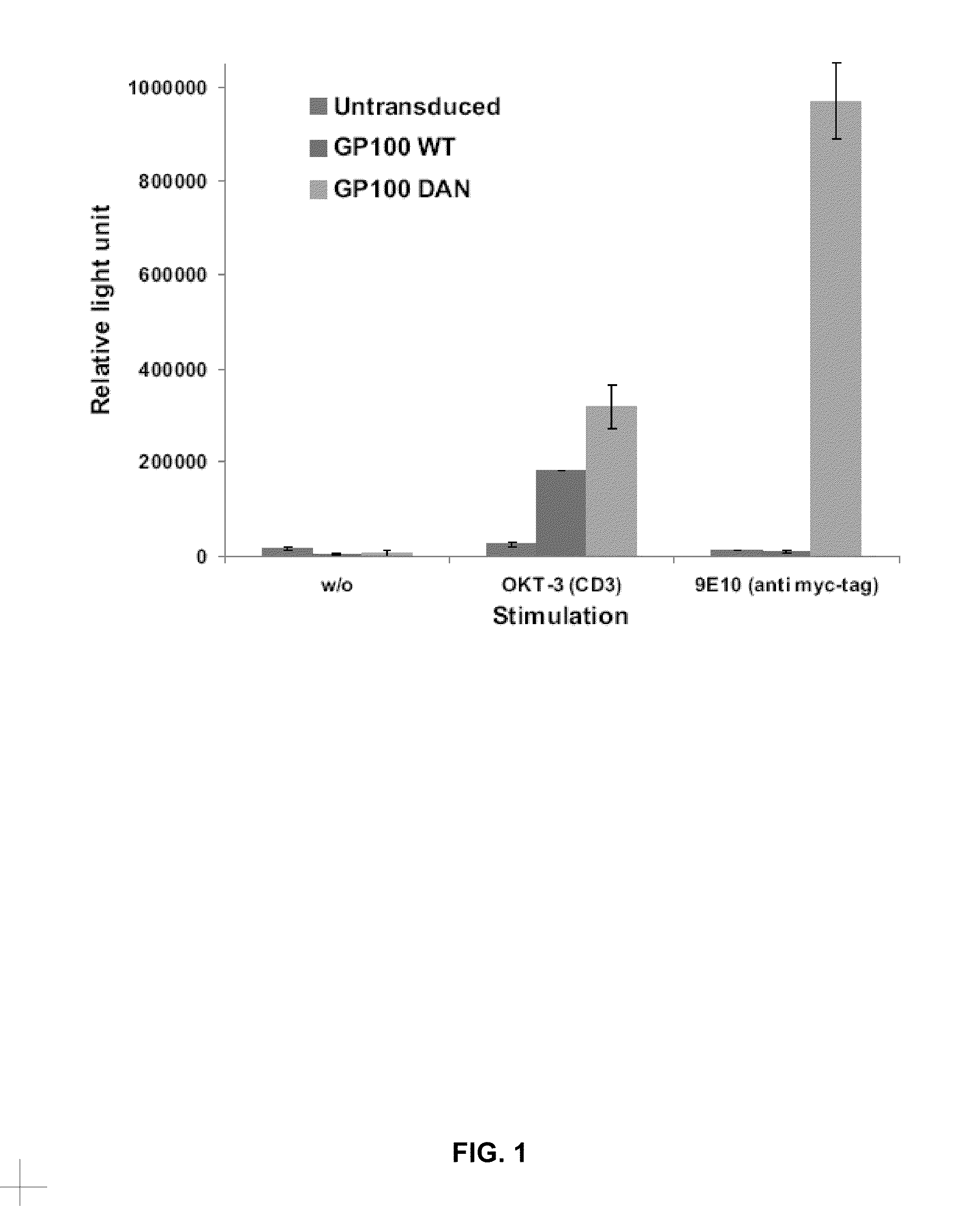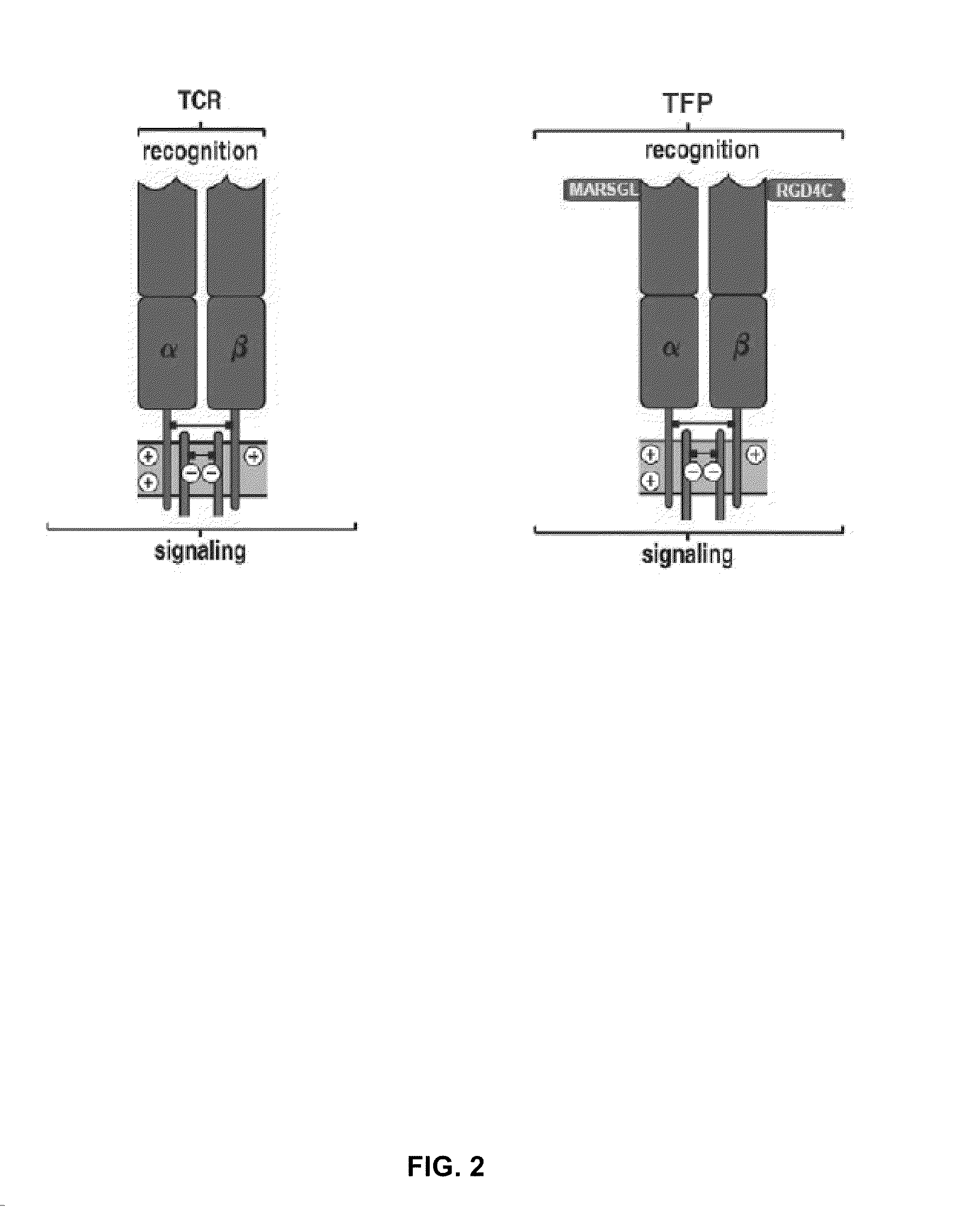Multiple target t cell receptor
a t cell receptor and multi-target technology, applied in the field of multi-target t cell receptors, can solve the problems of patient-derived t cells having sub-optimal activity, unable to recognize tumor associated antigens, and unable to meet the needs of patients, so as to improve the effect of therapies
- Summary
- Abstract
- Description
- Claims
- Application Information
AI Technical Summary
Benefits of technology
Problems solved by technology
Method used
Image
Examples
examples
[0088]The P14 TCR, which recognises the gp33 epitope from the lymphocytic choriomeningitis virus, was studied for identifying neutral sites for the introduction of peptide sequences. Similarly, the gp100 TCR, which recognises the human melanoma antigen derived epitope gp100209 was studied for identifying such sites. This was achieved by introducing a myc-tag sequence (table 1) into 11 different sites of the TCR molecule, five of which were used in both TCRs resulting in a total number of 16 different TFPs. T cells transduced with any of these 16 constructs expressed the TFP at a level similar to that of the wild type P14 or gp100 TCRs and maintained their specificity to the corresponding tetramer and to stimulation by the specific peptide-pulsed target.
[0089]Testing TFP for the ability of responding to de novo stimulation:
[0090]The inventors have recently used CD3 or myc-tag specific antibodies to investigate the possibility of stimulating the transduced T cells. They found that 9 o...
PUM
| Property | Measurement | Unit |
|---|---|---|
| diameter | aaaaa | aaaaa |
| length | aaaaa | aaaaa |
| nucleic acid | aaaaa | aaaaa |
Abstract
Description
Claims
Application Information
 Login to View More
Login to View More - R&D
- Intellectual Property
- Life Sciences
- Materials
- Tech Scout
- Unparalleled Data Quality
- Higher Quality Content
- 60% Fewer Hallucinations
Browse by: Latest US Patents, China's latest patents, Technical Efficacy Thesaurus, Application Domain, Technology Topic, Popular Technical Reports.
© 2025 PatSnap. All rights reserved.Legal|Privacy policy|Modern Slavery Act Transparency Statement|Sitemap|About US| Contact US: help@patsnap.com



